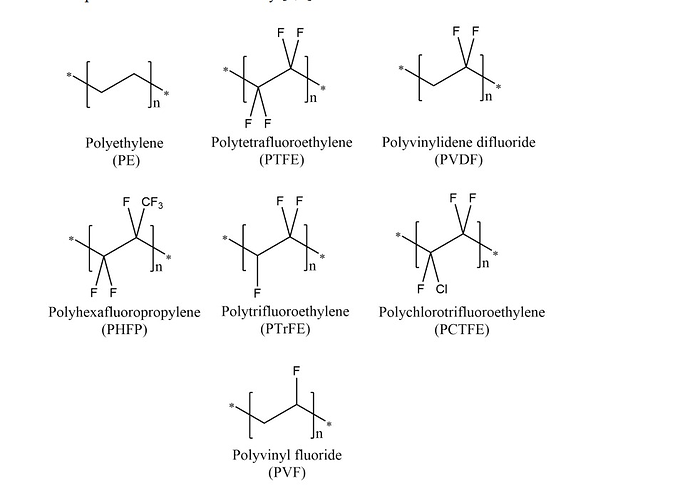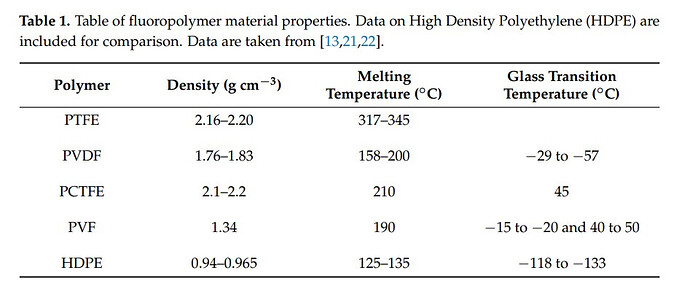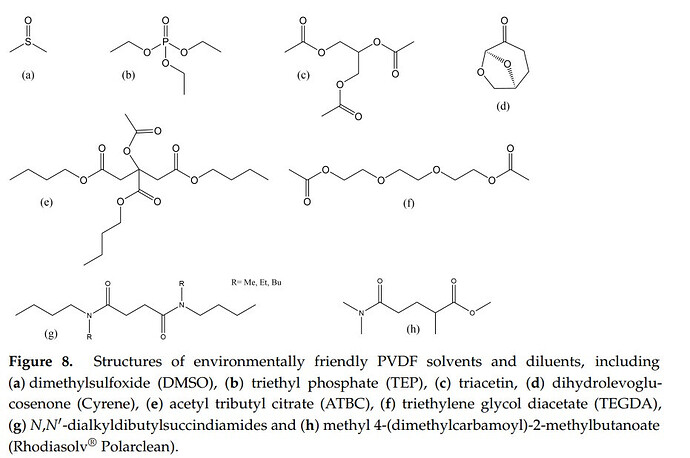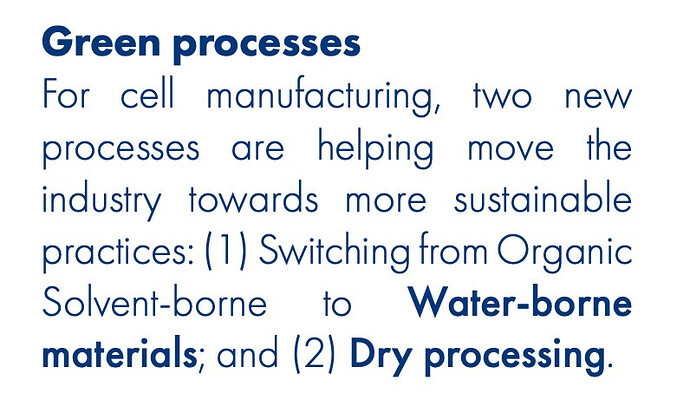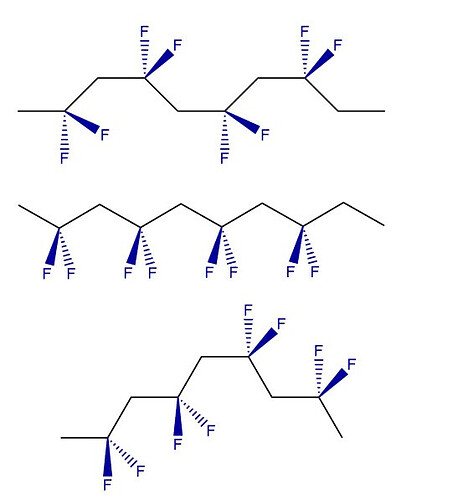This post would be slightly more technical but I will try to keep it as simple as possible. Majority of the content is based on one of the MDPI paper and Solvay/Arkema links posted in post above.
MDPI Paper → polymers-13-01354.pdf (2.4 MB)
First is chemical formula for various fluoropolymers →
Density and Melting Temperature →
Things to note →
- PTFE has two more F atoms than PVDF. Due to less F atoms, PVDF is less inert in PTFE and open to some of the chemical reactions, modifications needed in EV batteries.
- Because of 2 extra F atoms, PTFE has much higher melting temperature and density. Wherever extreme chemical inertness, thermal stability is needed PFTE is most preferred molecule.
Now let us switch gears to solvents →
So where is solvent needed? → Solvent is needed in any manufacturing process where PVDF/PTFE is required. You need to put PVDF/PTFE in solvent and then tune it to required chemical characteristic, physical form.
PTFE →
PTFE is insoluble in all organic solvents. Basically, it is a tough thermoplastic to recycle etc. Due to this, ESG focus is of utmost importance in all players dealing in fluorine chemistry.
PVDF →
Things to note →
- All solvents fall in dipolar aprotic category
- This category poses significant hazards to human health and environment e.g. NMP
- These solvents are restricted under REACH
There are few green solvents for PVDF which are talked about in the paper. They are listed in following diagram →
With all this theoretical knowledge, let us now see what are manufacturer offering →
Both Solvay and Arkema talk about solvents. Following is what I understand →
There are 3 methods where PVDF binders can be used in manufacturing →
- organic solvent based PVDF binders (harmful)
- water borne materials used in solvents for PVDF binders (better)
- dry processing (no solvent at all ?)
In addition to 3 requirements listed in previous post, this solvent requirement is fourth requirement for PVDF binder. This requirement is probably true not only for EV batteries but also for other PVDF applications. There is good research happening on solvent side.
Europe is where this requirement will become important, if GFL can export PVDF to Europe to top names, that is another validation of technical prowess.
Now let me switch to last topic, which is crystallinity →
As we saw in last post, one of the important requirement of PVDF binder is low swelling of electrode. Arkema is managing this requirement by fine tuning something called crystallinity
So what is crystallinity - it basically means same end chemical formula but different bond structure i.e. polymorphs.
Above are PVDF polymorphs or different crystallinity. There are alpha, beta, gamma polymorphs of PVDF, beta seems to be the one useful one.
The conclusion remains the same - commercial production of PVDF binder is no joke!

